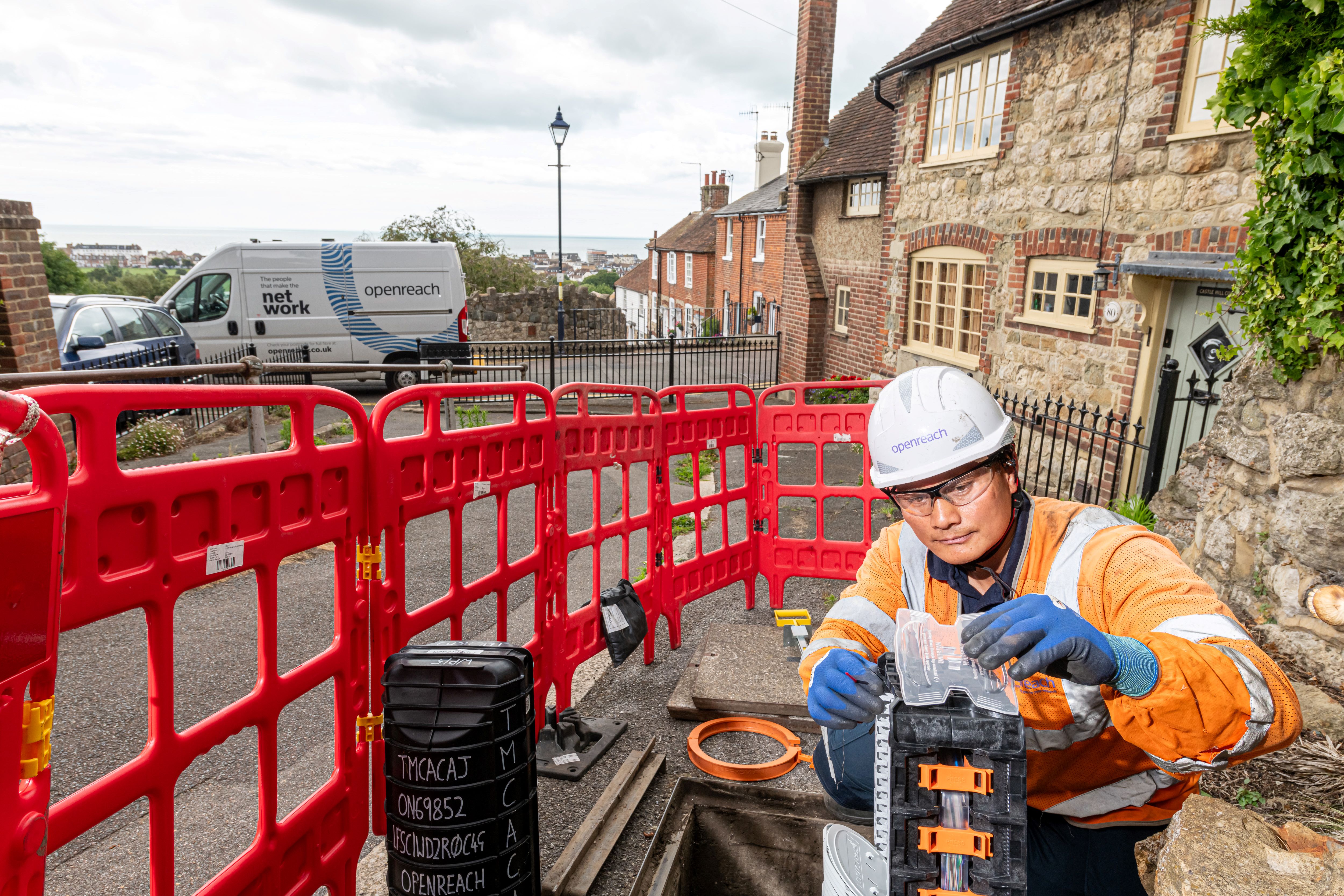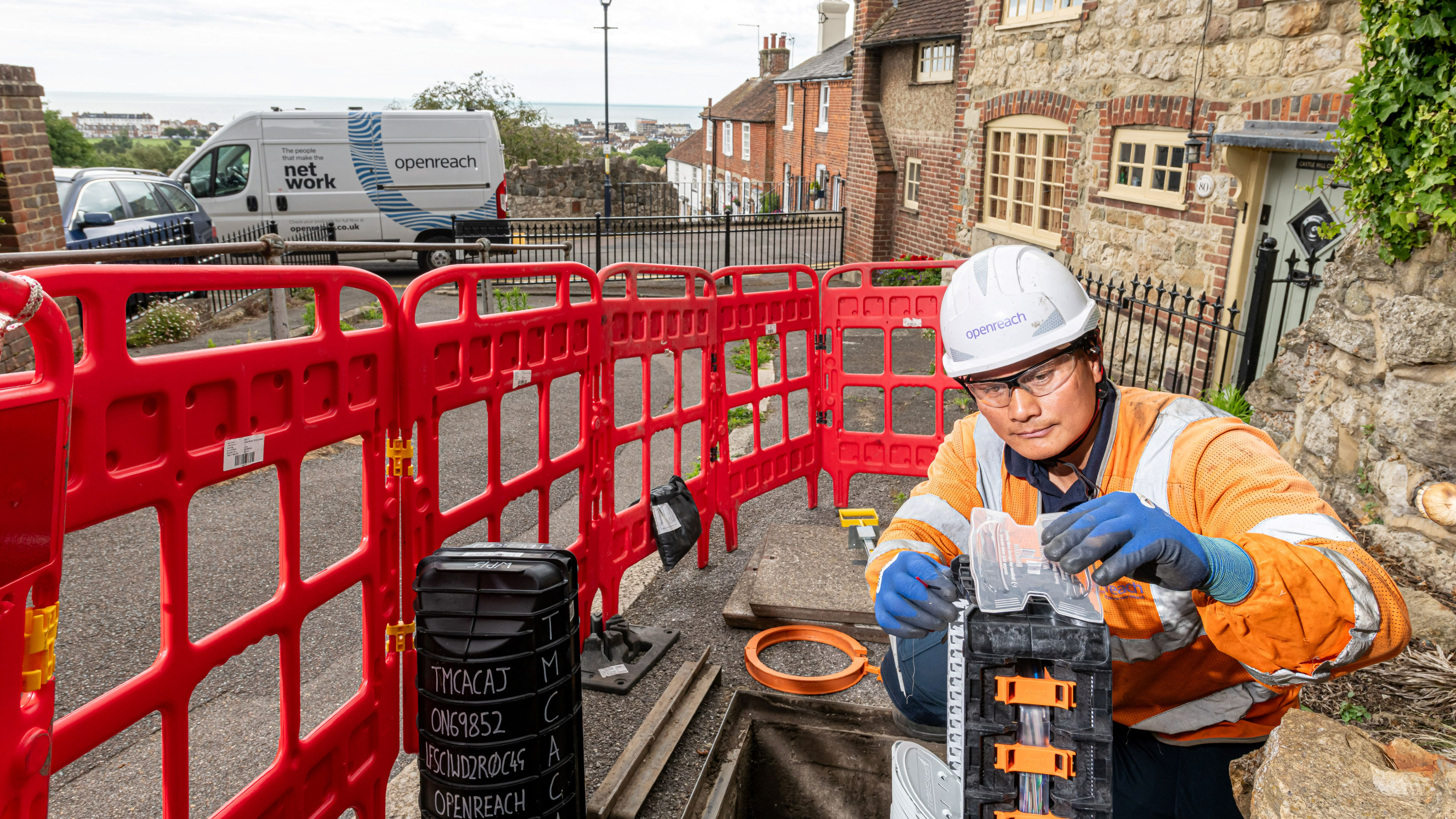
- 12.5 million premises connected
- 3.7 million rural homes connected
- £15 billion invested by Openreach
- On target to reach 25 million premises by 2026
- Aiming to have reached 30 million premises by 2030
In a huge step for the future of UK connectivity, Openreach has today announced it has officially reached over 12.5 million homes with its full-fibre infrastructure, meaning it has crossed the halfway mark to its target of 25 million homes being connected by 2026.
Openreach, the UK's biggest broadband network, has been working towards connecting the UK to full fibre for the past seven years, and is connecting over 60,000 premises per week to its full-fibre network, that's a new premise every 10 seconds.
The rollout has, so far, created new opportunities for a whole variety of both business and personal needs, reaching over 20,000 medical facilities and care homes, 18,000 educational buildings, and over 3.6 million homes in rural areas.

The work, however, doesn't stop there. As part of its announcement, Openreach also announced a further 142 locations which will soon be added to its full-fibre network, a decision which will give access to Opereach's ultrafast full-fibre to over 1.4 million homes and businesses.
Furthermore, although their main target is still 25 million premises by 2026, Openreach has now said it is also aiming to have reached 30 million premises by 2030, a more than achievable target if they continue deploying at their current rate.
Why is the full-fibre rollout important?
Since the pandemic, the UK's internet usage has more than doubled, putting more strain than ever on our household connections thanks to the rapid rise in working from home and learning online, and the Openreach full-fibre rollout is a key factor in tackling this drastic increase in demand.
Having invested over £15 billion in the rollout so far, Openreach is committed to meeting the nation's desire for better broadband. Receiving over thirty thousand orders per week, the rollout has the potential to add around 431,000 people to the workforce thanks to the ability to work from home, plus it could enable anything up to 270,000 people to move to remote areas without fear of losing connectivity.
This all sounds great, but to help you work out just how big an impact the Openreach full-fibre rollout could have on you, here are some answers to key questions you might have.
Openreach full-fibre rollout FAQs
How can I find out if I can access Openreach full fibre?
The Openreach full-fibre rollout is rapidly spreading across the UK. To find out exactly whether or not you have access, you can use Openreach's postcode checker to see the build status in your local area and sign you up for email updates so you get the latest information as and when it happens.
However, just because Openreach full-fibre hasn't reached your area, this doesn't mean you can't get a full-fibre broadband deal for your home. Virgin Media operate its own cable network and consequently can provide different (and sometimes improved) speeds in different regions of the UK.
What broadband providers use the Openreach network?
Openreach provides the broadband network for over 700 broadband providers in the UK. Some of the most notable names from among these include BT, Sky, EE, TalkTalk and Vodafone.
Although Openreach provides the network infrastructure for all of these brands, each brand has its own unique broadband deals, broadband and TV deals and more to suit varying needs.
The most notable broadband provider to not use Openreach is Virgin Media, which has its own broadband network powering its customers, meaning you are sometimes able to access higher speeds or connections in areas where Openreach may currently struggle.
How might the full fibre rollout change my day-to-day life?
Openreach has predicted a number of key changes could be seen as a result of the full fibre rollout. For instance, it is thought that thanks to the increase in full-fibre in the home, around 431,000 people could add to the workforce by working remotely by 2026. This would consequently save around 300 million commuting trips and three million journeys by car.
Plus, with a reduced need to consider connection quality when choosing where to live, the rollout could enable up to 270,000 people to move to remote areas to work, reducing the strain on more populated areas and public transport systems.
When it comes to how you use your connection, full fibre offers the chance for vast improvements in this area. A stronger connection enables higher-quality streaming, for more people, and more devices. For gamers, it reduces the risk of dropping out in the crucial moment of a game or missing out on conversations in voice chats. For sport-lovers, it means never missing that key catch, last-minute goal or knockout punch due to a poor connection, essentially it enables everybody's lives to be easier, and faster.







